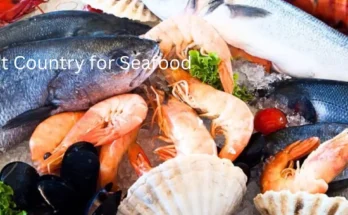Introduction:
The classic Caribbean dish cassasse is more than just a meal; it’s a journey into the culture. Food lovers love this culinary look because of its unique taste combination and long history. Come along as we explore the craft of cassasse and reveal the mysteries of this well-liked meal.
The Origins of Cassasse: A Culinary Journey Through Time
African and native Caribbean foods have influenced cassasse, which has strong roots in Caribbean culture. Over the ages, the meal has changed to represent the region’s rich cultural diversity and historical background. To completely understand the significance and intricacy of Cassasse, one must grasp its origins.
The Ingredients: A Symphony of Flavors
The components of Cassasse form its core; each was chosen carefully to provide a well-balanced combination of flavor’s. This dish’s foundation is made of cassava, coconut milk, and various herbs and spices; meat and vegetables are added later to give it more depth and complexity.
The Preparation Process: A Labor of Love
Cassasse preparation is a labor-intensive procedure that requires patience and competence. At every step, cassava is broken and then boiled in coconut milk, necessary to achieve the perfect harmony between flavors and sensations. Careful attention to detail and dedication to traditional preparation techniques make Family cooking art.
Serving Cassasse: A Feast for the Senses
Serving Cassava stew attracts diners with its bright hues and enticing smells. Its solid flavors and historical significance make it an impressive choice for a hearty dinner and a side dish.
Where to Experience Authentic Cassasse
The Caribbean is the best place to go if you’re eager to try genuine cassasse. This traditional dish is available at local cafes and restaurants all around the region, allowing guests to experience the region’s rich culinary legacy fully.
The Cultural Significance of Cassasse: A Dish That Tells a Story
Cassasse is more than simply a food; it represents Caribbean culture and history. Passed down through the years, it is now a custom that ties families and communities together, transcending its original use as food. Typically, families make Cassava stew in large batches, gathering to peel, grate, and cook the ingredients together. The essence of Cassasse’s cultural relevance lies in this sense of community.
Cassasse: A Culinary Tradition Passed Down Through Generations
The dish cassasse has been passed down in the Caribbean through the centuries. This dish has long been a favorite among families, and each dish has added its unique touch to the recipe. Many families have a long-standing custom of preparing and sharing Cassava stew. It’s an enjoyable dish. Cassava stew is more than just a food; it represents culture, tradition, and family.
Exploring the Variations of Cassasse Across the Caribbean
The way cassasse differs from Caribbean Island is among its most remarkable features. Every area has its unique interpretation of this age-old recipe, utilizing various ingredients and cooking techniques to produce a distinctive taste profile. Cassava stew called callaloo in Trinidad and Tobago, is prepared with okra, coconut milk, and dasheen leaves. It is made with salted fish, sweet potatoes, and yams and is called fish brew in Barbados. These variations demonstrate the richness of Cassava stew throughout the Caribbean and its diversity in cuisine.
Cassasse: From Farm to Table, the Journey of Its Ingredients
The ingredients necessary to produce cassasse travel significantly from the farm to the table. The primary component of Cassava stew, cassava, is cultivated in large quantities throughout the Caribbean. After harvesting, it is ground into flour or grated and used in cooking. To enhance the dish’s freshness and flavor, locals use ingredients like coconut milk, herbs, and spices readily available in the area. The route taken by the components for Cassava stew bears witness to the region’s rich agricultural history and the importance of sustainable farming methods.
The Evolution of Cassasse: How This Dish Has Changed Over Time
Like many other classic cuisines, cassasse has changed to reflect technological advancements, flavor, and ingredient availability. As home cooks and chefs experiment with unusual ingredients and cooking methods, a straightforward peasant dish has become a culinary marvel. The fundamental components of Cassava stew have remained the same despite these modifications, guaranteeing that future generations will continue to savor this well-loved exquisite food.
Cassasse: A Dish That Celebrates Community and Togetherness
Among its most lovely features is cassasse ability to unite people. Traditional dish is frequently in the middle of the action, whether it’s a community event, a family get-together, or a holiday celebration. People can connect by preparing and sharing traditional dish, strengthening relationships, and fostering lasting recollections. In this sense, Traditional dish celebrates community and solidarity, more than just food.
The Health Benefits of Cassasse: Nutritious and Delicious
Cassasse not only tastes delicious but also offers a range of health benefits. The primary component of cassasse, cassava, is high in fiber, vitamins, and minerals. Spices and herbs provide extra healthful chemicals and antioxidants, while coconut milk adds nutritious fats. You can make a healthy, filling dish that nourishes the body and the soul using fresh, healthful ingredients like cassasse.
Cassasse: An Artform on a Plate, the Presentation and Garnishes
Cassasse’s appearance is just as crucial as its flavor. Both professional chefs and home cooks enjoy how they present their food on the plate, enhancing its visual appeal with garnishes and decorations. The craftsmanship of Traditional dish, which ranges from straightforward patterns to complex ones, is a tribute to the talent and imagination of those who prepare it. Traditional dish presents a visually appealing and delicious feast, whether enjoyed at a family dinner table or in a classy restaurant.
Preserving Tradition: How Cassasse Is Keeping Caribbean Culture Alive
Traditional foods like cassasse are crucial to maintaining Caribbean culture and legacy in a rapidly changing world. Families can keep the customs of the past by transferring recipes and cooking methods from one generation to the next. International culinary programs also promote Caribbean cuisine’s rich culinary history and its importance in maintaining it for future generations.
Cassasse: A Gastronomic Adventure Through the Caribbean Islands
Cassasse offers an exquisite journey through the Caribbean islands for both adventurous and foodies. This tasty cuisine provides an understanding of the area’s history, culture, and customs with every bite. Enjoying Traditional dish at a busy market or on a sandy beach is a gourmet experience that will make an impression.
Conclusion: The Legacy of Cassasse
To sum up, cassasse is more than just a meal—instead, it represents Caribbean customs and culture. Recipe origins, components, and cooking techniques all play a part in making it a culinary marvel. A cuisine that never displeases and inspires is Traditional dish, whether eaten at home or in the Caribbean.
FAQs
Cassasse is distinctive because of its profound cultural importance and fusion of African and Caribbean cuisines.
With suitable materials and preparation, you can prepare Traditional dish at home.
Traditional dish is full of nutrients and can be a nutritious supplement to your diet when made with good, fresh ingredients.
It is possible to make Traditional dish vegetarian by substituting vegetable broth for beef.
You can adjust the amount of spicy peppers in Traditional dish to your preferred heat level.




